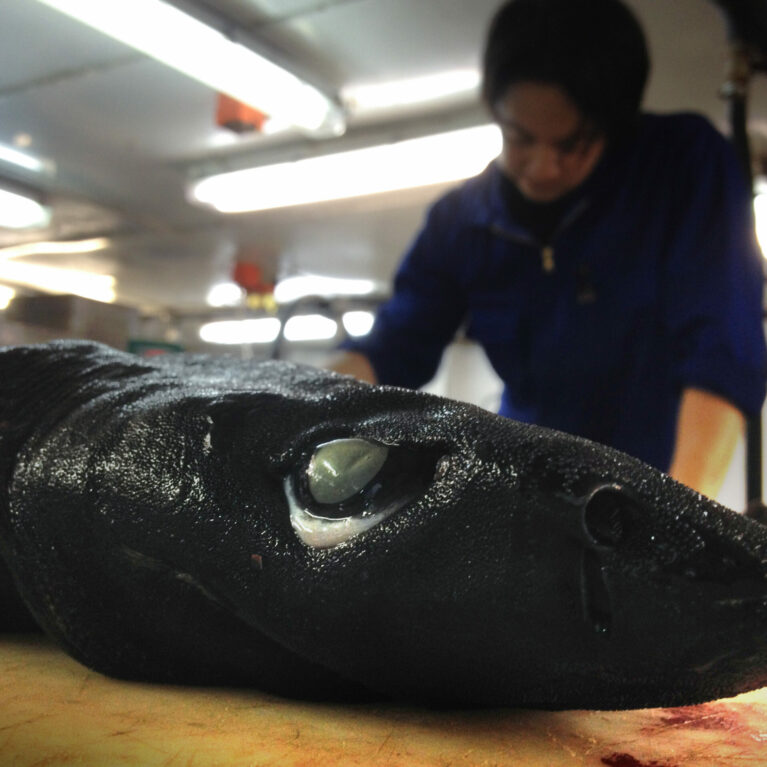Discovering deep-sea sharks
We know very little about the sharks of the deep. Paul has embarked on two expeditions to the stormy and remote reaches of the Indian Ocean to bring the mysteries of these underwater aliens to the surface.
Last frontier of shark discovery: unexplored seamounts of the Southern Indian Ocean
The general aim of this study is to survey deep-sea elasmobranch fauna in the by-catch of a deep-sea commercial trawler during an extended three-month expedition to remote and relatively unexplored regions in the Southern Indian Ocean.
Recent surveys of unexplored seamounts in the Southern Indian Ocean have yielded species of shark previously unknown to science. These areas are increasingly being targeted by commercial deep-sea fisheries. As species discovery is the first step in conservation, it is crucial to identify, document and understand these species to be able to manage them.
The deep sea of the Southern Indian Ocean is one of the world’s last unexplored regions, remaining virtually unstudied by science. The high productivity of the Southern Indian Ocean is attributed to steeply sloped seamounts. These topographical features appear to be hotspots of biodiversity.
Deep-sea elasmobranchs exhibit low fecundity and reproduce slowly. As upper trophic predators of seamount ecosystems, these slow-reproducing deep-water sharks are vulnerable to the over-exploitation affecting the unique endemic fauna of isolated seamount communities. The past two decades have seen the development of a commercial deep-sea fishery focused on seamounts in remote marine environments of the Southern Indian Ocean. Little is known about the ecology of these remote and understudied seamount ecosystems or how commercial fishing impacts their population structure, community dynamics and trophic interactions.
After sampling just 36 seamounts, the 2012 survey showed that Southern Indian Ocean seamount ecosystems are habitats of rare and undescribed deep-sea sharks. Since species varied between each isolated seamount, the seven undescribed species are likely to be just the tip of the iceberg with regard to new species discovery in the region. The 2014 expedition holds the promise for more shark discoveries.
The aims and objectives of this project are to:
- Discover new shark species, as sharks recently discovered on Southern Indian Ocean seamounts appear to be endemic indicating a high probability of disovering new species by exploring more seamounts.
- Collect life history data on poorly know or unknown deep-sea species crucial to the assessment and management of deep-sea fisheries.
- Collect genetic material in order to map the genetic lineage of all extant elasmobranchs.
- Document the survey with high-definition images and video.
- Promote the conservation of elasmobranchs through public outreach and presentations with images, data and specimens.


